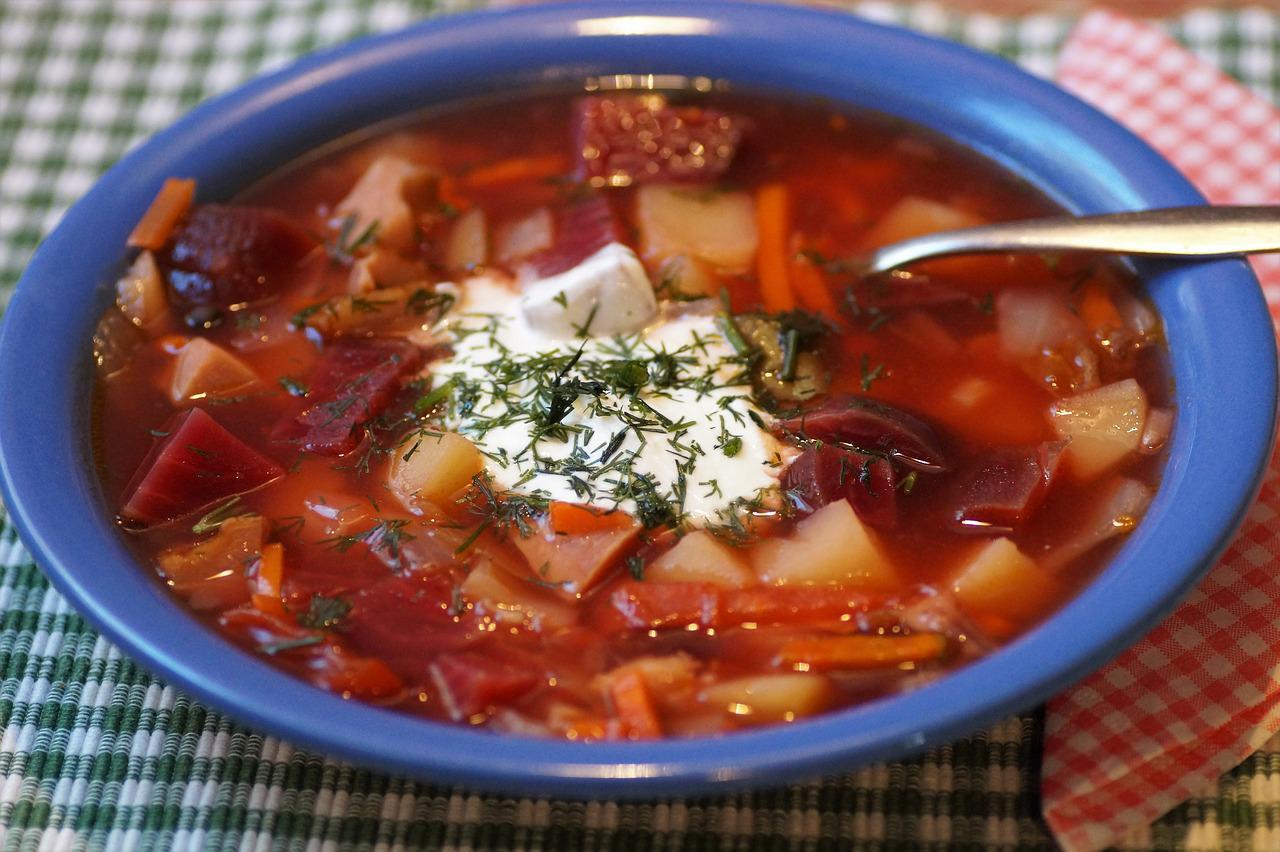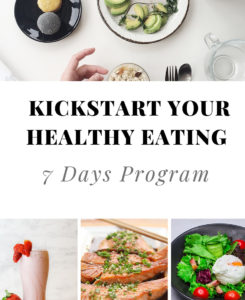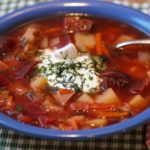Jump to Recipe
Have you ever tried Ukrainian borsch? If not, you have to try it!
I grew up in Ukraine, and we ate borsch every single week. The same was true for many Ukrainian families. You can call borsch a Ukrainian staple food. I left my homeland 22 years ago when we moved to Canada. We brought our traditions with us. We have left Ukraine, but Ukraine never leaves us.

Traditional Ukrainian home ‘hata’
The recent Ukrainian Festival in Montreal reminded me of this. Thousands of people came together to celebrate the beauty of Ukrainian culture, heritage, and resilience. Not to mention savoring the traditional yummy foods, including Ukrainian borsch!
What is the origin of borsch?
Borsch is part of several Slavic cuisines across eastern and central Europe. The origin of borsch is from Ukraine. In 2020, Ukraine applied to UNESCO to set the record straight. On July 1, 2022, UNESCO declared borsch an intangible cultural heritage.
History of Ukrainian Borsch
Borsch, also spelt borscht, is the staple of Ukrainian cuisine. Cooking this hearty beetroot soup dates back centuries and is passed between generations. Making borsch unites people of all ages at the table. In Ukraine, it is a symbol of a strong family. People eat borsch almost daily and serve it on holidays and at weddings.
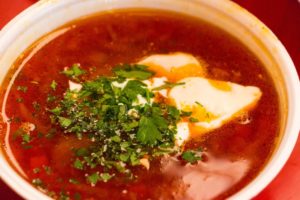
Is Ukrainian Borsch Healthy?
Traditionally, my family made borsch with meat broth, cabbage, carrots, potatoes, onions, garlic, tomatoes, and beets. You can cook it with vegetable stock and skip the sour cream for a healthier version. Eating a bowl of borsch will help you get your daily servings of veggies. Click on ‘Jump to Recipe’ button for exact measurements, cooking instructions and my secret ingredient!
Jump to Recipe
Borsch ingredients provide
- Iron, vitamin C, beta-carotene, potassium, and fibre.
- Protein from meat or beans.
- Cooked tomatoes contain antioxidant lycopene.
- Add fresh dill, parsley, or chives to your plate for extra goodness!
- Garlic and onion have prebiotic fibre and potent anti-microbial properties.
Do You Have to Use Organic Vegetables for Borsch?
The short answer and the good news is NO. The only borsch ingredient on the Environmental Working Group (EWG) Dirty Dozen list is tomatoes. Onions and cabbage are among Clean 15. The best way is to grow your vegetables if you can. Or find a local farmer who practices sustainable produce growing. Wash and scrub thoroughly with natural soap and water, and peel your veggies. You can also soak them in water with vinegar for about 15 minutes.
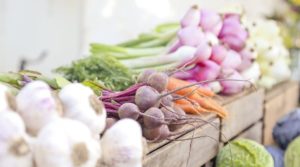
Is Ukrainian Borsch Low Glycemic?
Root vegetables usually have a higher glycemic index due to starch. It does not make them unhealthy, though. Here are a few tips to lower the glycemic impact of borsch:
- Use red potatoes or small potatoes instead of Russet potatoes.
- You can substitute with sweet potatoes if you like.
- Do not grate and overcook your veggies.
- Cook them just until slightly tender but not soft.
- The acidity and fibre help lower the glycemic impact of foods.
If interested to learn more about the benefits of low glycemic eating, check out my Kickstart Your Healthy Eating 7-Day Program.
Variations To Ukrainian Borsch
There are many different borsch recipes. You can cook it with chicken, meat, or vegetable broth. I like my veggies crunchy, so I chop carrots and beets. Some people prefer to grate them to be softer. You can use tomato paste or crushed tomatoes. If you make vegetarian borsch, you can add beans for extra protein. My Mom adds sour cream to the pot at the end of cooking. I prefer to leave it for everyone to add to their plate. You can eat borsch hot or cold. It also freezes well.
How To Make Borsch
My family’s traditional recipe starts with a base of chopped onions, carrots, and beets. You sauté them in butter or ghee until slightly tender. Feel free to use a healthy oil instead of butter if you prefer the vegan option. Then add crushed tomatoes, and combine with diced potatoes, shredded cabbage, plus a few cups of broth and water. Let the ingredients simmer together to combine flavors. I add salt, pepper, and crushed garlic at the end of the cooking. Crushing starts the production of allicin, the anti-microbial component of garlic.
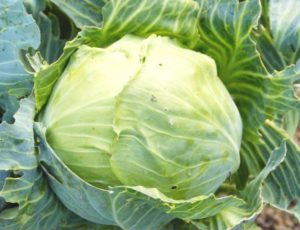
How to Core and Cut the Cabbage
- First, remove the thick outer leaves and rinse the cabbage.
- Trim the stem and cut the cabbage in half lengthwise.
- Lay half of the cabbage on its round side.
- Gently slice around the core to cut in a V-shape.
- Take out the core and slice the cabbage.
- Cut the half in half and slice on the corner side.
- You can roughly shred cabbage in a food processor.
Time-Saving Tips
If you are a busy Mom who doesn’t have much time, make it a family affair! Get your kids or spouse involved in washing, peeling, and chopping the veggies. Use a potato peeler for potatoes, carrots, and beets. You can chop the veggies by hand or in a food processor. Either way, make sure to slice the cabbage thicker than for coleslaw.
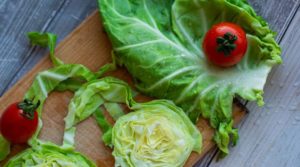
It’s ok to buy cooked beets, too. If you use cooked beets, add them to the pot last. I usually make a large pot of meat or bone broth and then freeze it. There is also a variety of commercial organic broth available. To save time, cook a large pot of borsch and freeze the leftovers. Cool borsch first, and transfer to glass mason jars. Make sure to leave room for expansion. Defrost borsch in the fridge and heat in a pot.
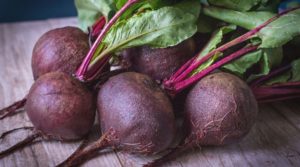
Best Ways to Enjoy Borsch
As I mentioned, Ukrainian borsch is a symbol of a strong family. The ingredients cooked together ‘marry’ each other to become one whole hearty soup. Eat it with your family, friends, and people you love! I prefer to put lots of greens in my borsch: dill, parsley, chives, or green onions. Try it with rye bread rubbed with raw minced garlic. If you are adventurous, you can bite right into a clove of garlic!
I like to eat my borsch with extra raw garlic and green onions. Psst! Brush your teeth and stay home 🙂
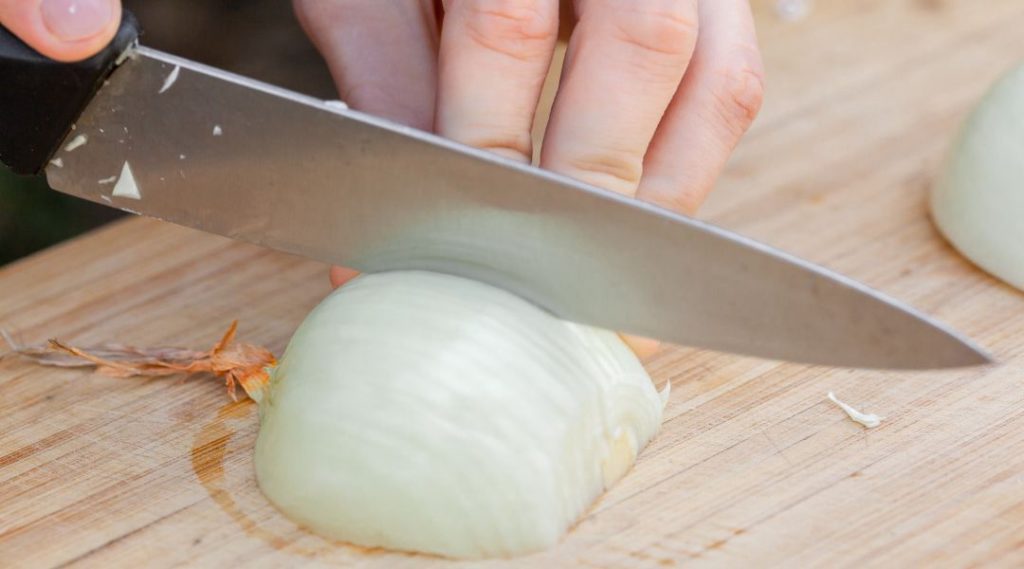
How to Cut Onions Without Crying
Do you hate cutting onions? I hear you! Onions make you cry when you chop them because allicin irritates your eyes. It’s pretty safe for your eyes but annoying. How do you cut the onion without crying? Here are a few tried-and-true helpful tips:
- First, chill the onion for 30 min in the fridge.
- Then cut off the top and peel, leaving the root end intact. It’s the root end that has the highest concentration of irritating compounds.
- Light up a candle near your cutting board. It burns the sulphuric compounds that cause your eyes to tear.
- Place a very damp paper towel next to your cutting board. The wet paper will absorb the chemical instead of your eyes.
- Fill your mouth with water but don’t swallow. Keep the water in your mouth until done cutting the onion.
- Use a food chopper to dice your onions.
Have fun cooking Ukrainian borsch, and let me know how you liked it in the comments. Bon appetit! Смачного!
Ukrainian Borsch
Equipment
- 1 Large one-gallon pot
- 1 Large sautéing pan or wok
- 1 Cutting board
- 1 Sharp knife
- 1 Vegetable peeler
- 1 Food processor optional (see note 1 below)
Materials
- 3 medium raw carrots, washed, peeled
- 2 medium raw beets, washed, peeled
- 1/2 head green cabbage
- 6 small potatoes OR 3 large red potatoes, washed, you can leave skin on for extra fibre
- 1 large onion, peeled, root end on, chilled in the fridge for about 30 min
- 3-4 cloves raw garlic, peeled, crushed
- 12 cups vegetable broth OR water + 1 cup boiled water, OR 6 cups meat broth + 6 cups water
- 2 cups crushed tomatoes
- 1 can 540 ml (19 fl oz) red kidney beans, rinsed, drained Optional
- 3 bay leaves
- 5-6 mixed peppercorns
- 1 tablespoon apple cider vinegar (ACV), preferably organic This is my 'secret' ingredient 🙂 See note 4
- 2 tablespoons butter or ghee, divided, OR 2 tablespoons olive oil or other healthier oil
- 1/2 teaspoon salt I like using Himalayan or sea salt
- 1/8 teaspoon teaspoon ground black or red hot pepper Optional
Instructions
- Place burning candle and wet paper towel next to the cutting board (see other tips above on how to cut onion without crying). Chop the onion into small cubes.
- Dice carrots and beets.
Zazharka: base of carrots, beets + onions with spices and tomato sauce
- Pre-heat large sautéing pan or wok on Medium High and melt 1 tbsp butter or ghee. If using oil, pre-heat 2 tbsp olive or other healthy oil on Medium.
- Add chopped onion, diced carrots and beets to the pan, mix, cover with lid. Reduce heat to Medium Low and sauté for 10-12 min stirring occasionally until veggies are slightly tender but not soft.
- Add crushed tomatoes and a cup of boiled water to the sautéing pan, bay leaves, and peppercorns. Stir, cover with lid and let simmer on Low for 3-4 min.
- Remove outer leaves from the cabbage, rinse and pat dry with a paper towel. Cut the head of the cabbage in half, and core the cabbage (see instructions in the post above on how to cut and core the cabbage easily).
- Cut half of the cabbage head in half, and slice each quarter at an angle.
- Wash, scrub and peel potatoes. I prefer to leave the peel on if using young potatoes - it adds extra fibre. Dice potatoes.
- In a large one-gallon pot, bring to a boil 12 cups of vegetable stock, water or half & half meat broth (6 cups) + filtered water (6 cups).
- Add diced potatoes and sliced cabbage to the pot. See below important note 3 about cabbage.
- Add rinsed, drained kidney beans to the pot if using.
- Boil on High for about 5-7 min.
- Combine 'Zazharka' in the pot with potatoes and cabbage. Reduce heat to Medium Low.
- Add salt, black or red hot pepper to taste if using, apple cider vinegar, crushed garlic and one tablespoon butter or ghee (skip this last ingredient if using oil).
- Stir, cover with lid, and simmer on Medium Low for 12-15 min until done.
- Remove from heat, let cool for about 20 - 30 min.
Serving Suggestions
- Optional: add dollop of sour cream or Greek yogurt to your plate.
- Garnish borsch with fresh dill, parsley, chives or green onions.
- Enjoy with toasted rye bread rubbed with minced raw garlic.
Notes
- You can cut the recipe prep time in half if you use the food processor.
- If you have dairy allergy or intolerance, you can use ghee instead of butter.
- If using young cabbage, add it to the borsch pot at the end, about 5-7 min after adding 'Zazharka'. Young cabbage cooks very quickly, and will become soggy if added earlier.
- I call apple cider vinegar (ACV) my 'secret' ingredient because it gives that particular slightly sweet and tangy taste that is essential to the borsch flavour without having to use added sugar and regular white vinegar.
- You will have a large batch of hearty soup to feed your family for a few days like people do in Ukraine. If you don't have a large family, you can freeze some of the borsch for later. Make sure to let it cool completely before freezing. Transfer borsch to glass mason jars leaving about an inch at the top for expansion, cover tightly with the lid and place in the freezer. Defrost in refrigerator overnight, and heat borsch in pot before eating.
